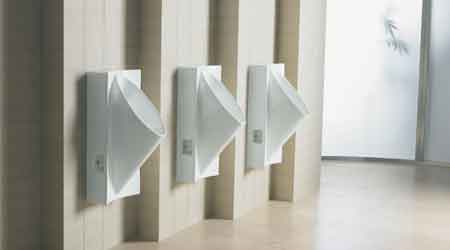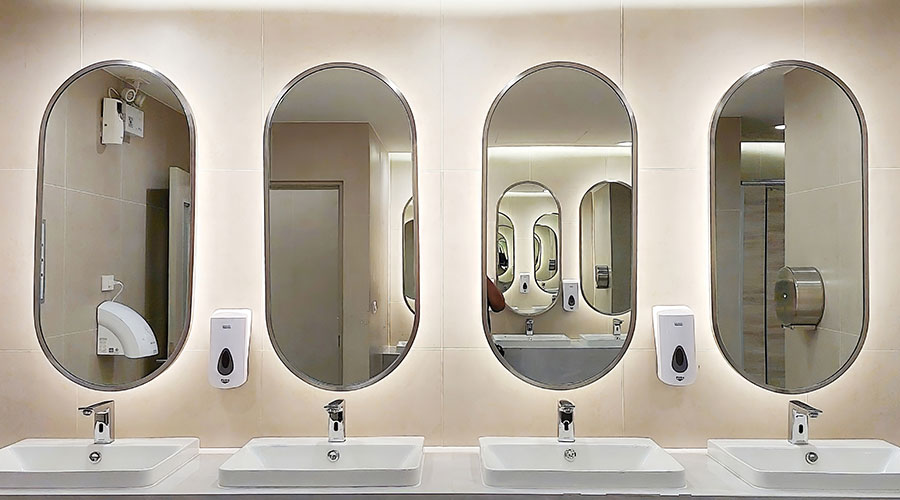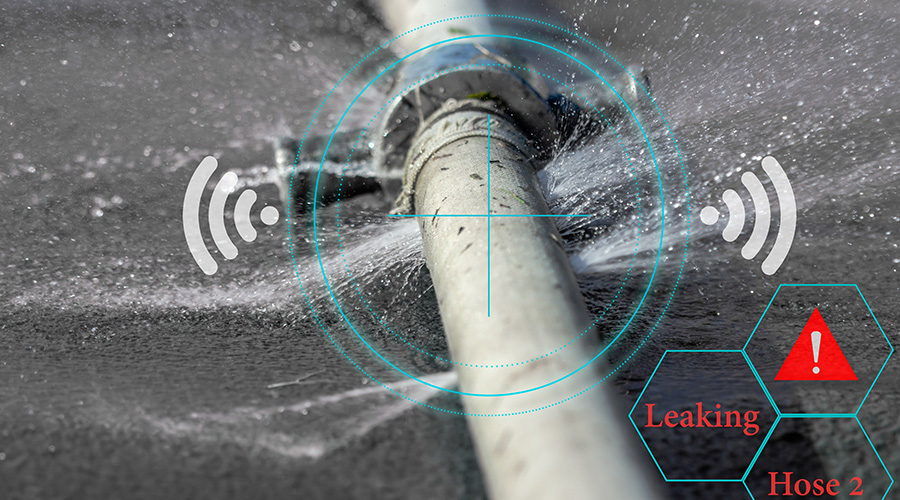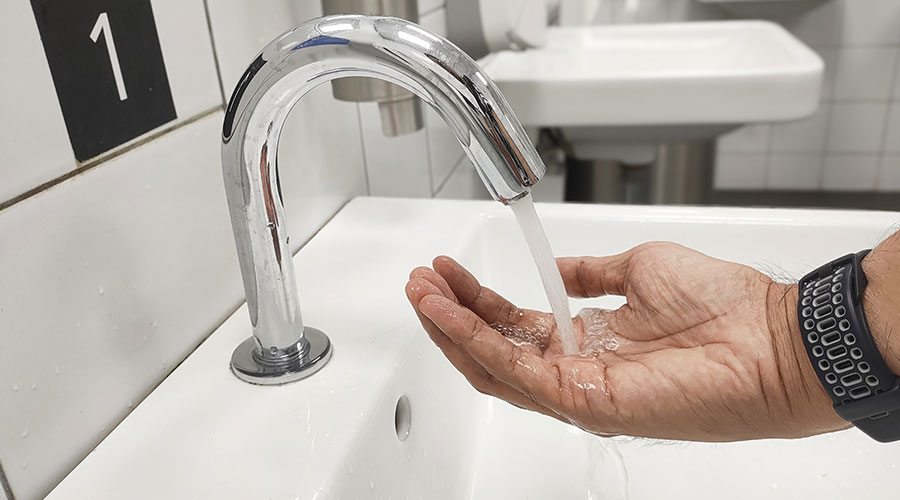Points to Ponder when Installing Waterless Urinals
Part 4 of a 6-part article on waterless urinals
In addition to understanding the issue of water savings and proper cleaning related to waterless urinals, managers also must consider a number of factors behind restroom walls before making the change.
For example, prior to specification, managers need to ensure that drain lines slope enough to push waste through the without the benefit of water.
Manufacturers recommend that drain lines slope at least ¼ inch per foot to ensure proper drainage.
“It’s almost a case-by-case basis, and you want to say there’s more concern going to low-flow closets because if your pipes are sloped too much or not enough, there’s a chance of an issue,” Carter says.
Managers concerned that drain lines will not handle a complete retrofit to waterless urinals might consider a partial conversion. Some facilities keep flush urinals higher on the drain line and install waterless urinals farther down. In this scenario, the systems rely on the water flow from higher in the drain line to help push waste from the waterless urinals through the system.
“The facility can save water but not have to go back to all standard flush units,” Carter says. “There are some solutions so you don’t have to give up the total savings.”
Before installing waterless urinals, technicians must prepare for less liquid moving through the pipes.
“Another consideration for retrofit applications is that the existing drainage system from the nipple all the way through into the main lines must be cleaned thoroughly before installation of the waterfree urinal,” Lawringer says. “Conventional urinals create a hard deposit called calcite, which slows drainage considerably. It’s important to take the time to clean the entire drainage system prior to the retrofit installation.”
Managers also should avoid combining waterless urinals with copper piping systems.
“Because there is no water, the concentrated urine and the gases produced become more corrosive to copper and can cause leaks,” Lawringer says. “Make sure (waterless urinals) are not installed on drain and vent systems using copper.”
Related Topics:

















